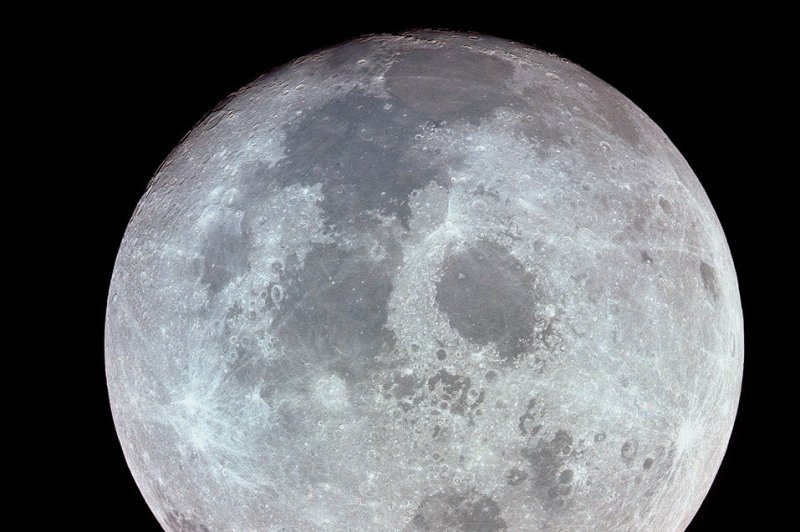The surface of the moon is seen from the Apollo 11 spacecraft during its trans-Earth journey homeward on July 20, 1969. UPI Photo/File |
License Photo
Aug. 11 (UPI) -- A new study of six moon rocks has discovered proof that the moon includes chemical elements from Earth's interior -- a finding that supports the theory that the moon was created when something smashed into Earth.
Doctoral research by Patricia Will at ETH Zurich found that six lunar meteorites found in Antarctica contained traces of helium and neon. Those gases, called noble gases, rarely bond to other elements.
"We thus conclude that the Moon inherited indigenous noble gases from Earth's mantle by the Moon-forming impact," the study said.
"Finding solar gases, for the first time, in basaltic materials from the Moon that are unrelated to any exposure on the lunar surface was such an exciting result," Will said in a statement.
ETH Zurich tweeted that the discovery "represents a significant piece of the puzzle toward understanding how the Moon and, potentially, the Earth and other celestial bodies were formed."
The research used an instrument in the Noble Gas Laboratory at ETH Zurich called "Tom Dooley," a state-of-the-art gas mass spectrometer named after a Grateful Dead song.
Will and the research team found that lunar glass particles in the moon rocks "retain the chemical fingerprints (isotopic signatures) of the solar gases helium and neon from the moon's interior."
This research is likely to lead to other research into noble gases in meteor rocks.
"I am strongly convinced that there will be a race to study heavy noble gases and isotopes in meteoritic materials," ETH Zurich Professor Henner Busemann said in a statement.
One of the world's leading scientists in the field of extra-terrestrial noble gas geochemistry, Busemann anticipates that researchers will soon look for noble gases such as xenon and krypton, which are harder to identify.
NASA's James Webb Space Telescope captures a fiery hourglass of light. This cloud of dust and gas is illuminated by light from a protostar, a star in the earliest stages of formation. Photo courtesy of NASA
















